The first time was called folly by some. The second time has been labelled madness by many. Counsels unheeded, I venture back to the icy heart of Sarek national park, in the Swedish arctic. Would lessons hard learned change the outcome of this formidable challenge?
Return to Sarek
Adventures are called such because they are risky, unpredictable and difficult to see through. By their very nature, not all adventures go according to plan. For every success there is a failure, for every jubilation there is hardship and suffering. That is exactly what makes them so appealing, because if it were safe and certain, there would be no thrill or sense of achievement upon completion. Most of my adventures have been fairly successful, if you don’t mind adjusting the goal post slightly, but one adventure in particular would be difficult to describe as a success, even with my ever optimistic demeanour.
“For every success there is a failure, for every jubilation there is hardship and suffering.”
Despite 6 months of planning and training, my solo expedition to the majestic mountains of Sarek was fraught with challenges, failures, suffering and plain old bad luck. If you haven’t read my first three Sarek articles, then I suggest you entertain yourself with my trial by ice while you sit cosy with a cup of tea. A glass of single malt would also be an approved alternative to the tea. Sarek, the oldest national park in Europe, is situated in the far north of the Swedish Arctic and boasts around one hundred glaciers in a beautiful but deadly landscape. Even in the summer this is a rarely travelled wilderness, but in the depths of winter it can be truly hostile and make summer in Antarctica look like a teddy bear’s picnic (albeit one that serves iced tea).
I’ll admit that many of the errors were down to my decisions and planning, after all there is only so much that one can research in books, or their modern day digital equivalent; there is no substitute for first-hand experience. However, on this occasion of my fall from the frying pan into the fire, Sarek had thrown its very worst at me. With snow so deep I sank until my waist, even with huge powder skis, and temperatures dropping well below even what a -35 degree Celsius thermometer can read, it was more brutal than I ever could have expected. Even the old Swedish military adventurer Paul that I met out there, who had been doing these sort of expeditions for over 40 years, couldn’t remember a winter quite so tough. Can you believe that just before the trip I was rather disappointed that the weather forecast had predicted a paltry -10 degrees; no worse than an average winter’s day in that curious country at the top of Britain where all the men wear skirts and batter their Mars bars. No metaphor is intended here.
“It was more brutal than I ever could have expected“
While I could perhaps be forgiven for brushing off this fateful encounter with the dark side of mother nature as just a spot of bad luck, I ultimately have to bear responsibility for my decisions. As nonsensical as it may sound, I stepped into that wilderness knowing that one element of my equipment wasn’t quite suited to the task. Wishing to avoid the responsibility for my bank manager’s coronary after the wallet draining exercise of procuring the world’s warmest sleeping bag, an entire ‘pulk’ system (‘sled’ if you’re not Scandically inclined) and various other essential items, I decided against investing in a proper expedition boot & ski set. At the time it felt like just too much of an outlay before I had even discovered whether I actually liked this whole suffering solo in the snow business. I should have known that when trifling with the Arctic in winter, there is no option other than to fully commit. As such, I paid the price with my long suffering feet, having covered them with blisters the size of golf balls due to the stiff plastic Alpine touring boots I decided to use. My agony was further prolonged by the heavy and rather lethargic Alpine powder skis which sucked every last drop of momentum from my painful shuffles.
For more on boot-related reading, you will find at my article on expedition footwear here.
I had also assumed there would be significantly more clothing crossover between mountaineering, particularly of the high altitude flavour, and Arctic ski adventures. On the surface it all seems very much the same kind of folly; bitter cold, lashings of ice and plenty of brightly coloured equipment, all mixed in a bucket of suffering. Over the years I have whittled and honed my mountaineering ‘system’ to serve me well and naively assumed that it would be my faithful companion in this seemingly similar setting. Unfortunately, the nuances of the two environments and activities mean that the specialist equipment used for one activity can become wholly unfitting for the other. This was all further compounded by the unseasonable conditions that had befallen me. Had mother nature been feeling rather delicate that month or I had been able to do my original plan of a double-crossing of Hardangervidda, then I might have even succeeded, blissfully unaware that I was going about it all the wrong way. However, the most important lessons are often best learned with blood, sweat and tears, and I had no shortage of those on my steep learning curve in how to tackle Polar environments.
“The most important lessons are often best learned with blood, sweat and tears”
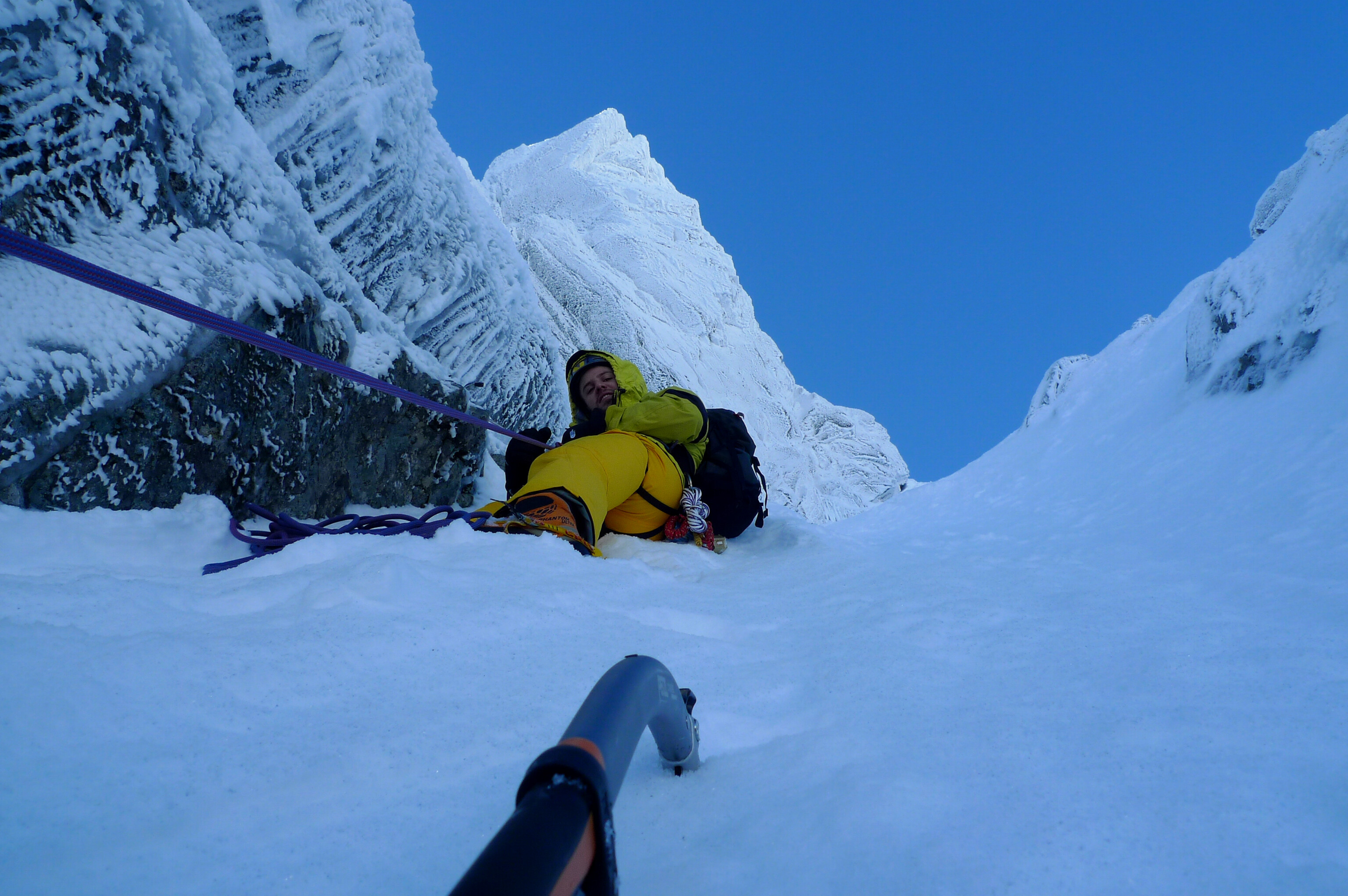
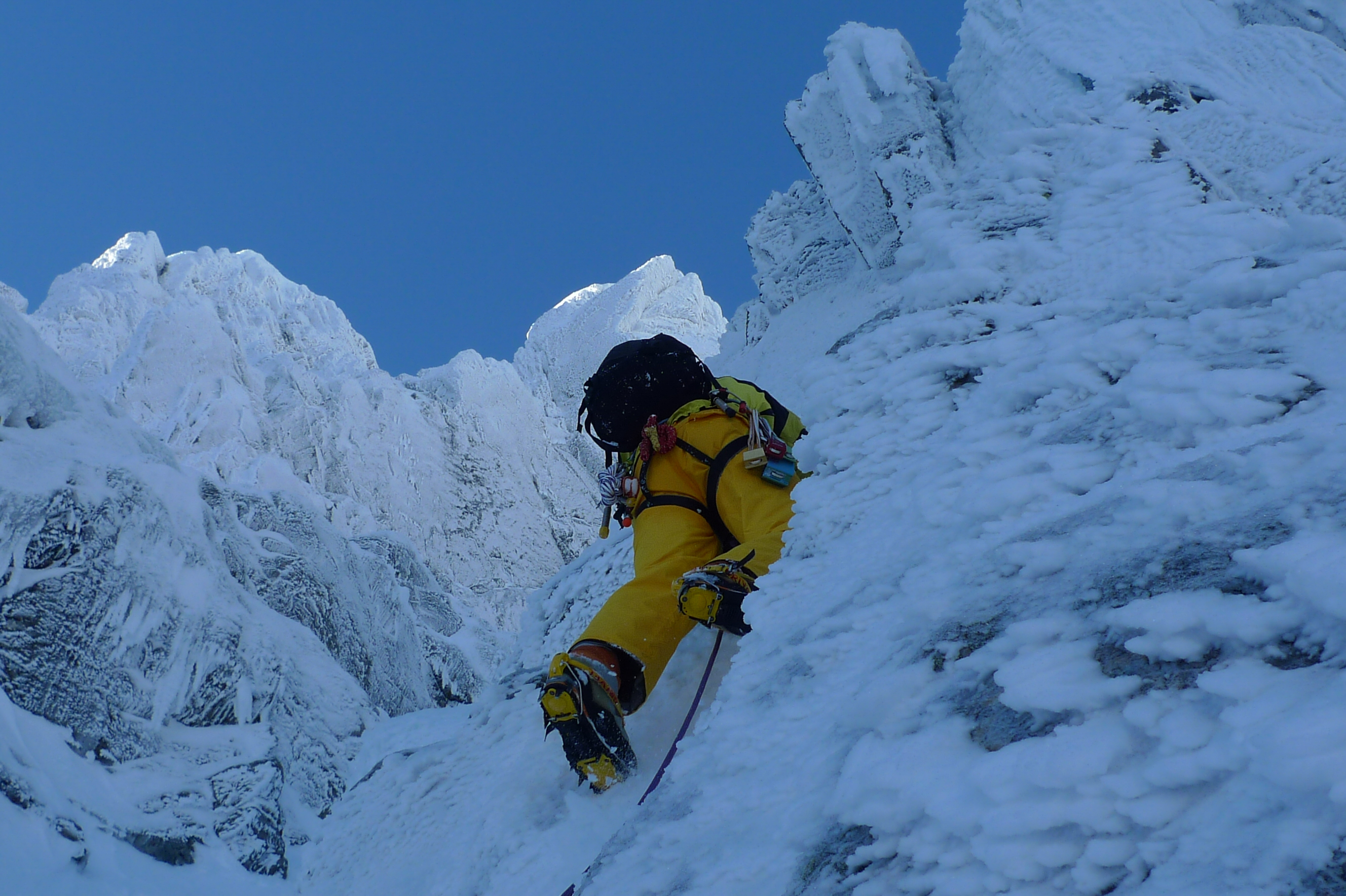
Leading North Gully of Ben Nevis; while seemingly similar, the clothing required for mountaineering is quite different.
For a detailed account of the slight calamity that was my expedition, I request again that you read the articles of my first Sarek adventure. I shall, however, provide a little more detail here for those who are short on time. Aside from my Alpine boots attempting to chew through my poor feet, I also suffered from a mismanagement of moisture. Despite the Arctic being rather dry (all that life-giving water tends to be locked up in ice and snow), there is one particularly effective generator of water and that is yours truly. As a natural born human radiator, I tend to perspire somewhat while doing anything remotely active. Even at -25 degrees while skiing, I was getting a tad sweaty in just a thin fleece and my base layers. Compounded by the exceedingly deep snow in places, which forced me to work harder than I would have liked, I ended up making my clothes more than a little damp.
With my gloves, fleece and base layers frozen solid that night, I had attempted to dry them against the aforementioned human radiator. This is standard practice given that it’s the only practical source of heat, lacking in any willing companions as I was. However, the moisture from my soggy attire had condensed in my down sleeping bag, causing it to collapse as down does so well when wet; exactly on the night when the mercury shot through the bottom of the glass. If you’ve never spent a night wide awake with a sleeping bag that has reduced in thickness from 6 inches to a matter of millimetres, shivering your bones apart whilst wishing you were somewhere warmer (like your freezer), then I envy you. It is a quite some way off being tolerable and makes for a rather foggy head the next day (tactfully ignoring the risks of hyperthermia).
What was the result of all this mishap? Less than a week into my expedition, burdened by screaming feet and yet another moisture mishap (a leaky water bottle, before you misconstrue), I made the difficult decision to about turn and trudge back from whence I came. It would have simply been too much of a gamble to try for even the shortest route option, and I have no luck in poker. Now, if you know me even just a little, this sort of defeat is not the sort of thing that I stand for. Despite being treated to the Aurora Borealis as a send-off, I very much had unfinished business. However, as it turns out, it was more than that. In truth, I secretly enjoy the hardship and, despite all the trials, I had revelled in my wintery solitude. We all have our quirks.
“I made the difficult decision to about turn and trudge back from whence I came”
Thus, it was late in 2022 when my attention turned once again to Sarek. A new job at the start of 2022 had prevented the first opportunity to reattempt, and the distraction of bike packing that year had delayed my focus. Once I planted those first seeds though, I was overcome with a flourish of excitement as I mustered all my resources in pursuit of my quarry. Luckily, at least as the sanity of my most tolerant partner goes, this expedition would not need the 6 months of absorptive planning that was required of the first edition. I had done much of the leg work, validating many of the hard fought lessons as I went, and mostly everything just needed tweaking. One element was inescapable though… training! There is so substitute for putting hours into sweat and pain, albeit it can be made more efficient with targeted training for the task in hand.

Not all training goes to plan… sometimes one can push things a little too hard.
So, you might ask, what would be different this time? Firstly, I am happy to inform you that I have bought thermometers which reach as low as -45oC! Who would have thought that -30oC on the scale would be insufficient? One significant change, though not dictated by necessity, would be the addition of the bearded mountain-man who joined me at the summit of Aconcagua wearing a Viking helmet, otherwise known as Ian. As you may recall, my initial plan to cross Hardangervidda was in a foursome of likeminded comrades, before the global pandemic threw a spanner in the gearbox. Having already bought a bright blue pulk (it matched the colour of his trousers), Ian was keen to join on this upcoming attempt. Yes, there are others in this world with equally silly ambitions as me, though not all of them own a pair of gorilla feet slippers which are used to summit mountains. That accolade remains firmly with Ian.
“Yes, there are others in this world with equally silly ambitions as me”
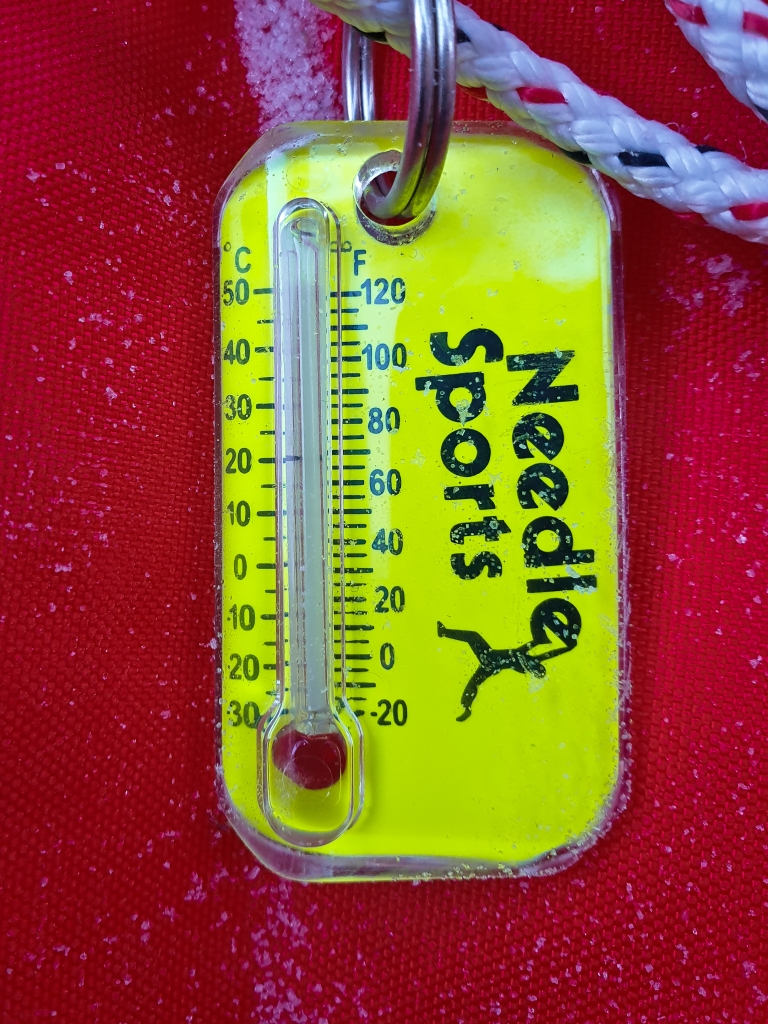
Apparently, a thermometer that goes down to -30oC was not sufficient.
While I very much enjoy the challenge and isolation of going solo, having a brother in arms on such trips does have its benefits. Firstly, the tent becomes noticeably warmer, though slightly more cramped. The human body is a surprisingly good heater, but below -30oC only one tired corpse does a poor job in a cavernous tent. Secondly, the tedious tasks that absorb many hours each morning and evening, such as making & breaking camp and melting many kilos of snow, can be helpfully divided. Finally, the moral boost to push on when one’s will is weak and faltering cannot be underestimated. I have no doubt that Ian and I drove each other on during that arduous summit push to 6961m in the Andes.

Me and Ian on the summit of Aconcagua at 6961m after a gruelling 13 hour summit push from camp 2 at 5500m.
The route was another area that required a little, shall we say, optimisation. As a result of my sweaty struggles through the deep forest powder which drained my energy and had sodden my clothes, it was clear that I should give the forests a miss where possible. Despite the inherent risks, frozen rivers and lakes were a better bet, at least until one made it to the exposed snow slopes higher in the mountains. In my defence, plotting a route somewhere new with only a map, and almost no helpful records of previous travels in said area in winter, can be a little hit and miss. However, with my now first-hand experience of at least part of the route, better judgements could hopefully be made for my 2023 route. I had also learned from Paul, the equally mad ex-military Swede whom I crossed paths with on multiple occasions, about the dangers of crossing the Rappa river in the wrong places. Not wanting test my life insurance by plunging into the icy depths of the glacial outflow, it was a particularly helpful lesson to learn.
There was another valuable gem that Paul shared with me. Remember that my damp sleeping bag had collapsed? I certainly do. This had never been a problem in previous trips where I might have encountered -20 degrees, as either the moisture could escape before freezing, or the bag could be dried in the sun. Neither luxury was afforded to me during the Arctic winter. Moisture management is actually the single biggest challenge for someone like me who happens to produce a lot of heat, and thus sweat, when moving. Paul, learning of my woes the days before, had advised on the benefits of the ‘vapour barrier liner.’ While purporting to be something rather technical, it is really just a layer which is impermeable to moisture. I had been using them for my feet (simply some plastic bags between my socks) but had never imagined that it would be something that anyone sane would try with their entire sleeping bag.
“Remember that my damp sleeping bag had collapsed? I certainly do.”
On the face of it, it sounds particularly uninviting; sleeping in a glorified plastic bag that even the least discerning tramp might shun. However, upon researching it, it is a remarkably effective method, used by many people on long expeditions, that is not nearly as sweaty as one might assume. The moisture escapes through the opening by your head and keeps the sleeping bag dry while allowing damp items to be dried against the tepid body furnace. On my return to snow-free lands I immediately purchased one and had the opportunity to test it during my winter bike-packing in the German mountains. Having only space for my summer sleeping bag, and faced with 3 nights of sub-zero temperatures, I brought along my newfound vapour barrier liner. My bag remained dry and warm, while the experience was no worse than napping on a humid day in the tropics. Thank you Paul.

Testing my vapour barrier liner and new summer sleeping bag during an ambitious (foolhardy) bike-packing trip in the German mountains.
On the subject of moisture management, one key difference between ski touring with a heavy sled and mountaineering is the level of effort required throughout the day. High altitude mountaineering involves a lot of slow plodding, and technical climbing can be fairly lethargic as well. As such, the use of leather for gloves, merino wool for base layers, or ‘hardshell’ waterproof jackets is not an issue. In fact, they all have very desirable properties for the activity. Ski touring, on the other hand, is a relatively high intensity activity where one sweats heavily throughout the day. Leather gets damp and freezes (I actually do technical climbing armed with at least 3 pairs of gloves for this reason), so I resigned my plethora of climbing gloves to the attic and purchased some decidedly old school woollen mittens which breath as well as a Sherpa. At least, if nothing else, I’ll look Scandinavian.
While my merino base layers would stay, the upper half would be complimented by what I would affectionately call an ‘Australian suit.’ This is simply a mesh top, as might be worn by your average Fosters drinker on a summer’s barbeque. It does a great job of trapping warm air while also transporting moisture away from the skin. Above my base layers I would simply wear a thin fleece, even for the coldest days, but when the wind picked up, I would need a jacket that would shield me from the chill while still remaining incredibly breathable. Out went my classic Gore-Tex style hardshell (basically a full-on waterproof jacket); this being replaced by its counterpart the ‘softshell’ which is only water repellent but is good at keeping the bitter Arctic winds out.
“At least, if nothing else, I’ll look Scandinavian.”
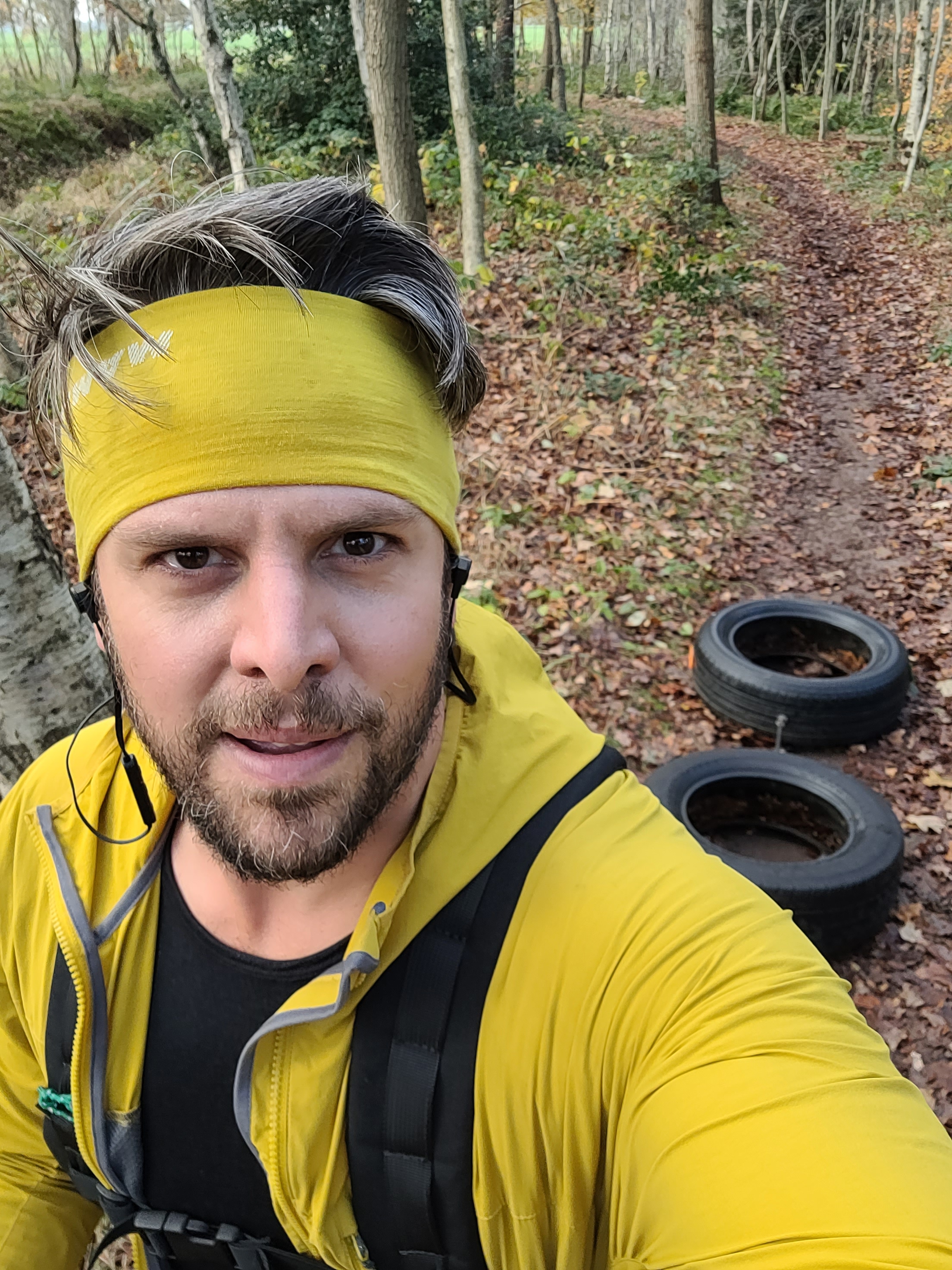
My new softshell jacket from Mountain Equipment proving to be fairly effective at venting moisture during hard efforts.
As I have alluded to at the start of this article, Alpine ski boots are not really suited to the rhythmic plodding across relatively flat landscape. Ultimately, it was the horrific blisters that I endured which sounded my doom. While well suited to short climbs up a mountain, followed by an adrenaline fueled ride down, courtesy of gravity’s relentless march, they are far too stiff and heavy to haul across frozen flats for days on end. The equipment designed for the job is very much a Nordic specialisation; thick yet soft insulated boots, thin, stiff skis for efficiency, lightweight bindings and specialist skins to provide the required grip and traction to haul a pulk. Having learned my lesson that there should be no compromise when it comes to key equipment, I am happy to report that I am now the proud owner of the stupendously warm and comfortable Alfa Outback boots, coupled with a rather delicious set of Asnes Gamme skis. This combo will surely transform my fortunes, though I could probably do without the gentleman Aleksander Gamme staring back at me as I ski, judging my shoddy technique. I wouldn’t have uttered many complaints about owning the model with the Tonje Blomseth top-sheet, but I suspect that my expedition manager might have a few justified qualms regarding this.
“I could probably do without the gentleman Aleksander Gamme staring back at me as I ski”

Who is that looking back at me? Despite the curly haired top-sheet, expedition skis don’t come any better than these.
Much of this new fangled equipment needs to be tested of course; it would not be altogether wise to step into Sarek having not done some field testing. While my initial plans of a frugal trip to Winterberg in Germany were scuppered by one of the worst snow seasons on record, I turned to my ace in the sleeve, Norway. With a somewhat slimmer wallet, I booked myself 3 days of cross country skiing in the forests north of Oslo. Despite the disheartening experience of learning to Nordic ski while being overtaken by every Norwegian and their dog, I came back with a few key takeaways. Firstly, Nordic skiing certainly requires a more delicate balance. However, those tumbles were rewarded with a significantly more efficient ski set-up and I was able to make 25 kms a day, even spending quite some portion of each day breaking trail through the trees. Mind you, I was unburdened by any pulks. I also found my Alfa Outback boots to be orders of magnitude more comfortable than my plastic Alpine touring boots, despite experiencing some heel-lift.


Testing my decidedly professional expedition ski touring equipment in the deep snow of the Norwegian forests.
A few chinks in my shiny armour were exposed though as my new gloves and mitts were thoroughly misbehaving. My new woolen mitts and thin liner gloves were as ill-fitting as my company issued coveralls and the thicker liner gloves burst open before the first day was even though; hardly the sort of dependability one needs many days from civilisation. More worrisome though was the fact that my super slippery mohair skins, designed for Prius-like efficiency while providing sufficient traction to haul my pulk, had worn out in as little as 70 kms. While one might attribute this to the relatively warm temperatures causing some icing, I’d be a fool not to come armed with two new pairs on my expedition. Shuffling the remaining 130 kms on my ultra grippy full length climbing skins is not the sort of challenge I want add to the already bloated list. I probably didn’t need another reminder of how expensive expeditions can be.
At this point I am running the risk of sounding like everything went wrong and those months of preparation for were nothing. I can assure you that not all my efforts were in vain. While it is probably far less exciting for the reader to hear what went well, there were also areas where barely a shade of optimisation was needed. The additional pinch of salt in the stew. The extreme cold played havoc with my electronics but for the most part they survived. I probably didn’t need to lug quite so many battery packs around with me as there proved to be less use of modern aids than I had anticipated. It also became apparent in those temperatures that my specialist ‘Polar’ head torch had the staying power of a teenager; it was all over in a few minutes. Instead, my rather more modest (both in size and expense) Petzl Actik rechargeable headtorch was able to go all night. I’ll be returning with two of these while the Polar torch will be left to light up the inside of a cupboard. Other bonus items that will be joining me include a ‘Kakua’ pulk bag which makes snack breaks and layer changes much easier, while keeping that dammed water away from my sleeping bag (see Sarek Expedition – Part 3).

An excellent solution for storing the day’s bits and bobs, as learned from the masters of the Arctic; Innuits.
There were a few elements of my winter dining that I felt could be improved as well. Thanks to my decades of experience using freeze dried food with a few embellishments, I felt that I had the dinner side of things running as smoothly as a sled on ice. My usual propensity to Earl Grey tea for the bulk of my liquid intake also went down a treat; hydrating yet moral boosting, and even backed up by studies on Everest it seems (those who drank tea were equally hydrated, but somewhat cheerier). Breakfasts were a cumbersome affair, however. While my self-made porridge mixes were cheap, easy to make, and kept things exciting with a wide range of flavours (chocolate and coconut being my particular weakness), they were a damned nuisance to clean up after. While scrubbing the welded porridge from the bottom of a pan with spaggy moss is tedious in UK temperatures, it becomes downright miserable doing it with chunks of ice and snow on a winter Arctic morning. I would have to bite the bullet and fork out for pre-made freeze dried breakfast pouches. This would negate the need to do the morning dishes and keep my hands largely porridge free in the mornings. Ian’s dislike of porridge means that he plans to opt for dinner meals for breakfast. While I have been known to feast on the remains of a cold curry for breakfast, I am not sure chilli con carne would be my go to food first thing in the morning! At least he’d have time to de-gas during the day.
“I can’t rely entirely on elk sausage and gin infused cheddar for my daily energy intake”
Carbs are a great source of energy while doing any activity; dried crunchy snacks and cereal bars are a staple for my hiking trips. Unfortunately, in the frigid temperatures of Sarek, they largely tasted like stale cardboard flavoured with saw dust. On the other hand, fatty salami type meats and cheeses, which can be a tad greasy in warm weather, really came alive (not literally, thank god) in those conditions. While I can’t rely entirely on elk sausage and gin infused cheddar for my daily energy intake, I’ll certainly be leaning more heavily on these tasty treats for my daytime snacking. Finally, I’ll definitely be leaving the cupa-soups at home this time. Not only did I pass them over for tea, my bright idea of Swedish fish soup had become significantly less appealing after a hard day’s slog (and you don’t want to know what it does to the taste of tea when you don’t clean the mug properly).
So, after all of this, you might be asking whether I feel prepared this time? The short answer is yes. I was lucky (though many might strongly disagree on this statement) that last time the conditions were so brutal. This meant that I quickly learned what works and what doesn’t when nature throws the worst at me. Survive, or even thrive, in Arctic winter, and one should be as prepared as one can be to dip a frozen toe into Polar expeditions. There is a reason that the famous explorers Amundsen and Nansen did their Polar training in Hardangervidda, and Sarek is another step above that. Thus, with the lessons learned from my first solo Arctic expedition, and learned in blood (metaphorically and physically, if you saw my feet), I feel that I am suitably prepared for Sarek in terms of equipment.
You can read about other aspects of my diligent preparations here.

Winter in the Arctic can present some of the most inhospitable conditions one would dare to endure.
As you might realise though, equipment is only half of the story, though when you’re awake shivering through the night in a collapsed sleeping bag at nearly -40oC, it can very much feel like the whole story. While the training and fitness needed is something that I felt went relatively well last time (see what is involved here), there definitely could have been improvements. Mind you, it’s not always easy to balance the intense programme needed with a full time job, a house that needs looking after, and plethora of other passions which cry for attention (I should also mention that my partner also appreciates it when I am home occasionally). When I trained for Aconcagua, albeit starting from the lowly depths of being an unfit smoker, I had to put my entire life on hold for 2 months. I am fairly sure that Alexandra wouldn’t let me get away with that this time, especially not over Christmas! However, starting from a good base, courtesy of my newfound love of gravel biking and bike-packing, my training so far has been encouraging (although my new cycling legs have meant that many of my suit trousers no longer fit across my thighs). As well as tyre pulling, which I discuss in my original article on training for the Arctic, I also have been mixing in far more core and upper body strength training in the form of weights and rowing. This has come partly from the availability of fitness equipment at my work location in Qatar, but I am learning that strength plays an important part in endurance.
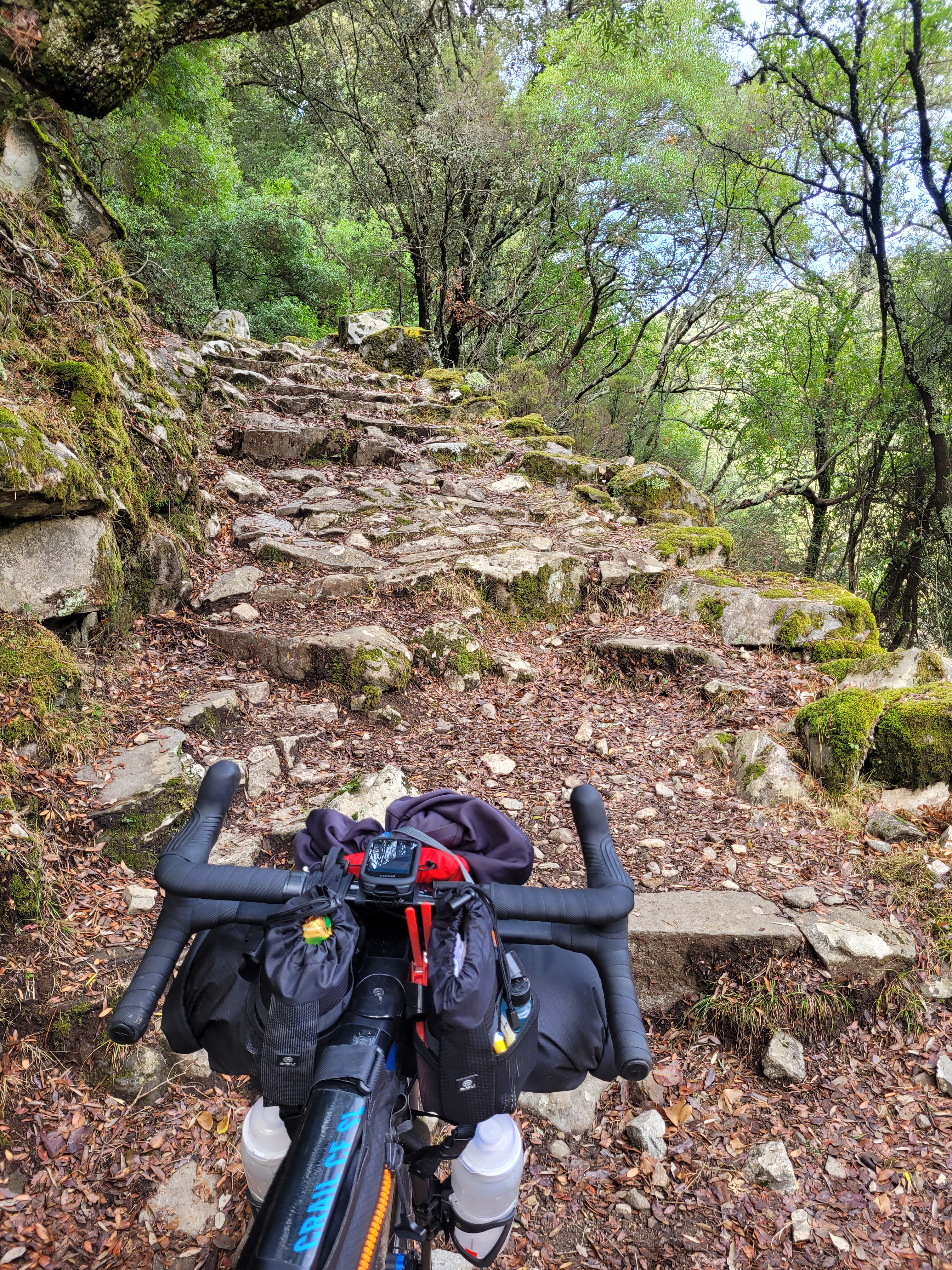
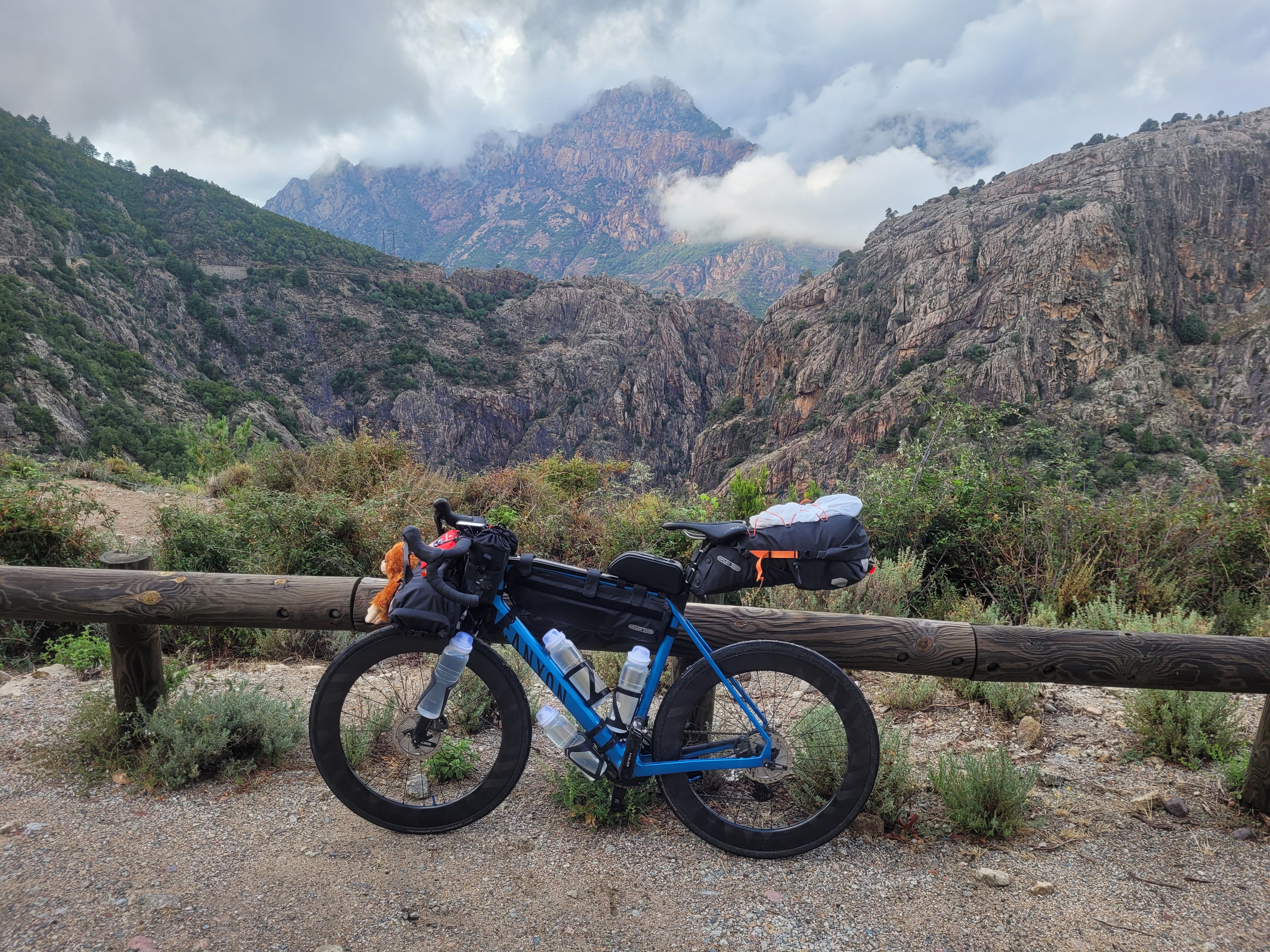
Bike-packing is a great way to build leg strength, especially in the mountains of Corsica where I burnt up to 7000 kcals a day.
While this expedition will certainly be better prepared, and dare I say vaguely proficient, it will likely be no less gruelling than my first attempt of the Arctic in winter. Some of this will come down to how mother nature feels on the particular day; at the time of writing, it’s only -10 degrees in Sarek, but I have heard that joke before! As Ian and I experience the beauty of Sarek, you’ll once again be able to follow my progress. On this very website you’ll be able to see a real-time breadcrumb trail, as well as being able to read the messages I send back to civilisation, via my lifeline in space (satellite communication, not God). I hope that this time I will be able to return having viewed the spectacular beauty of the heart of Sarek, with its towering mountains and glacially carved valleys. And maybe, if I am lucky, or indeed worthy, perhaps the Valkyrie will once again dance through the skies above Sarek and treat me to one of the greatest displays on this fair planet.
“On this very website you’ll be able to see a real-time breadcrumb trail”
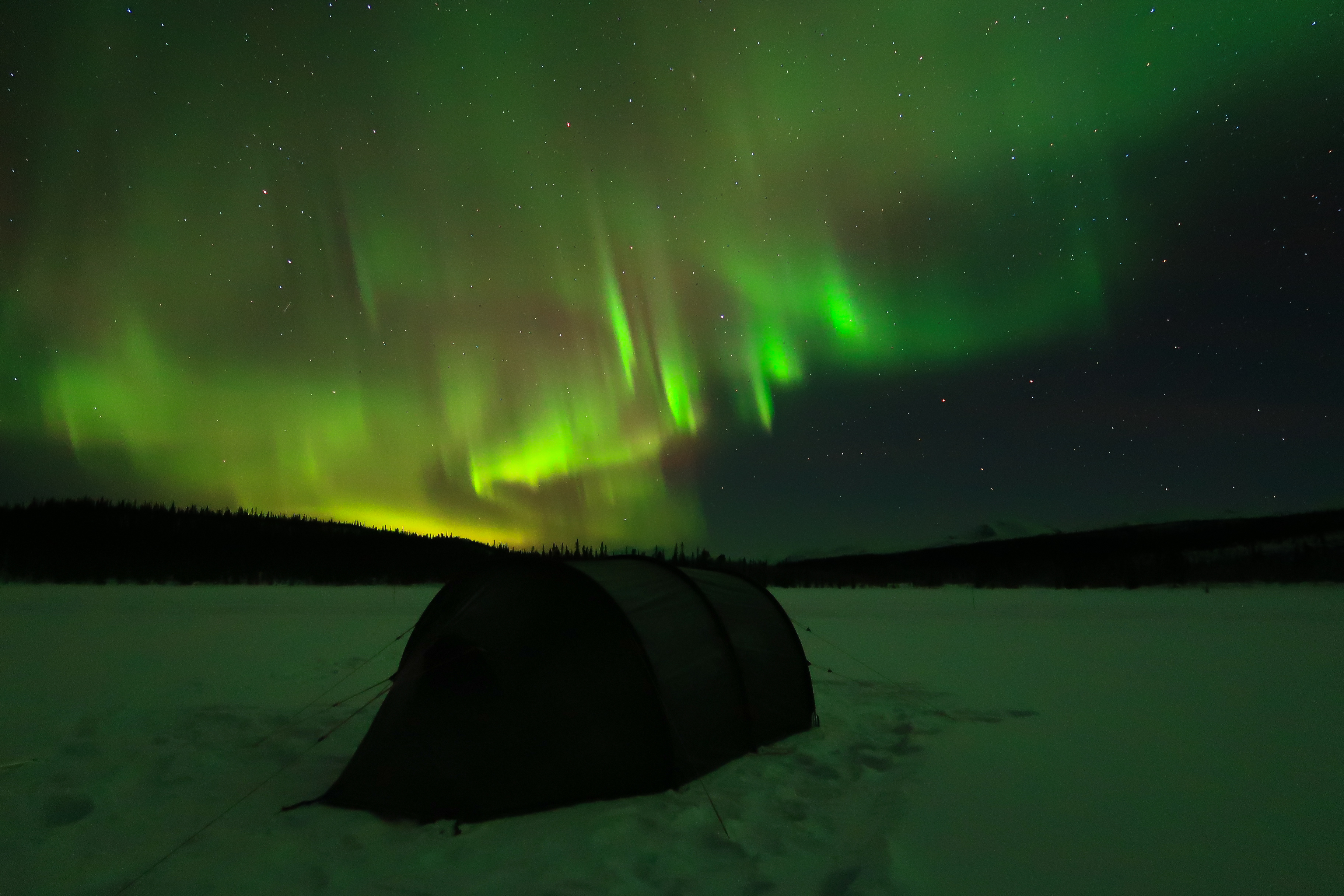
Nothing can describe the feeling of viewing the northern lights, alone in the Arctic wilderness; a true gift of the Norse gods.
Want to follow me on my journey?
From the 27th of February, you will be able to track my progress live via my Garmin satellite phone. Click here to follow my route and subscribe to be notified when future articles are published.

Want to stay updated on the latest adventures?
I have only just begun to tell the many stories of my adventures. Stay connected to learn about past, present and future expeditions.

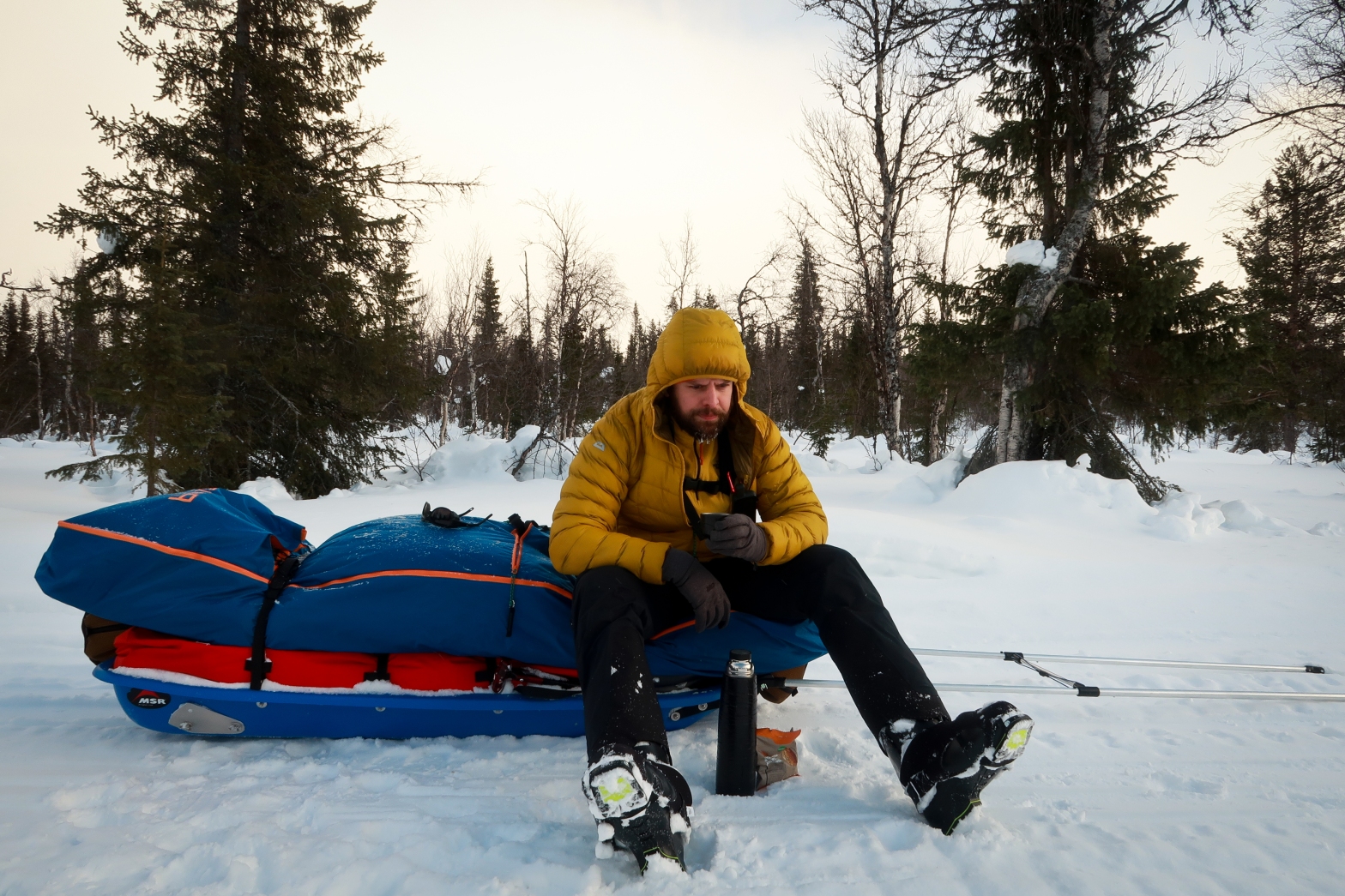
Great reading Zander, I like your humor mixed with good facts and tip’s. Looking forward to hear all about the trip next time we are onboard. I guess no hot spicy sauce packed for this Artic trip 🙂
See u soon again!
LikeLike
I suppose it could be summed up as managed madness. For those of us that spend their lives trying to avoid the cold reading your daily log is like watching porn ,something that is ok for other people but glad l don’t have to do it
Very interesting read ,there are a lot of people who do extraordinary things but they can’t write.You can.
LikeLike
Good luck Zander, hope all goes well this time and your poor feet survive the expedition.
I look forward to hearing all about your adventure in due course.
LikeLike